- Joined
- Jan 18, 2010
- Messages
- 16,121
- Reaction score
- 9,080
- Points
- 453
- Location
- Residing in Wicklow Ireland
- Printer Model
- Canon/3D, CR-10, CR-10S, KP-3
I set out to improve the Extruder performance on my CR-10 by drilling out the hole that the filament passes through before it goes into the Teflon tube that leads down to the hot-end.
I made the hole big enough to allow me to screw a steal 30mm throat (Normally used in a hot-end) right into the plastic block that sits on top of the Extruder motor.
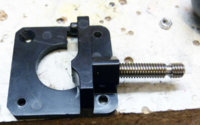
 Click to enlarge..
Click to enlarge..
I used a throat that had a small Teflon tube inside it and then added a heating block to it, (Cut in half) which allowed me to fit the Pneumatic Connector to hold the Teflon tubing.
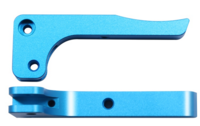
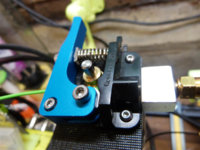
Then I fitted a new Aluminium easy to use arm bracket with an adjustable nut to help increase the pressure on the little filament bearing, I had another Aluminium arm for the other side, but it didn’t suite my current setup, so didn’t use it.
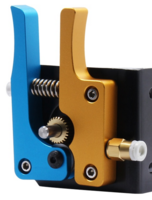
Once assembled it came together nicely and I tested it a piece of green filament before re-attaching the Teflon tube again, the proof of the pudding will be using it to print something, but I’m confident it will work as it’s supposed too..
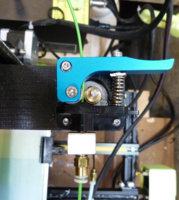
I made the hole big enough to allow me to screw a steal 30mm throat (Normally used in a hot-end) right into the plastic block that sits on top of the Extruder motor.

 Click to enlarge..
Click to enlarge.. I used a throat that had a small Teflon tube inside it and then added a heating block to it, (Cut in half) which allowed me to fit the Pneumatic Connector to hold the Teflon tubing.


Then I fitted a new Aluminium easy to use arm bracket with an adjustable nut to help increase the pressure on the little filament bearing, I had another Aluminium arm for the other side, but it didn’t suite my current setup, so didn’t use it.

Once assembled it came together nicely and I tested it a piece of green filament before re-attaching the Teflon tube again, the proof of the pudding will be using it to print something, but I’m confident it will work as it’s supposed too..




